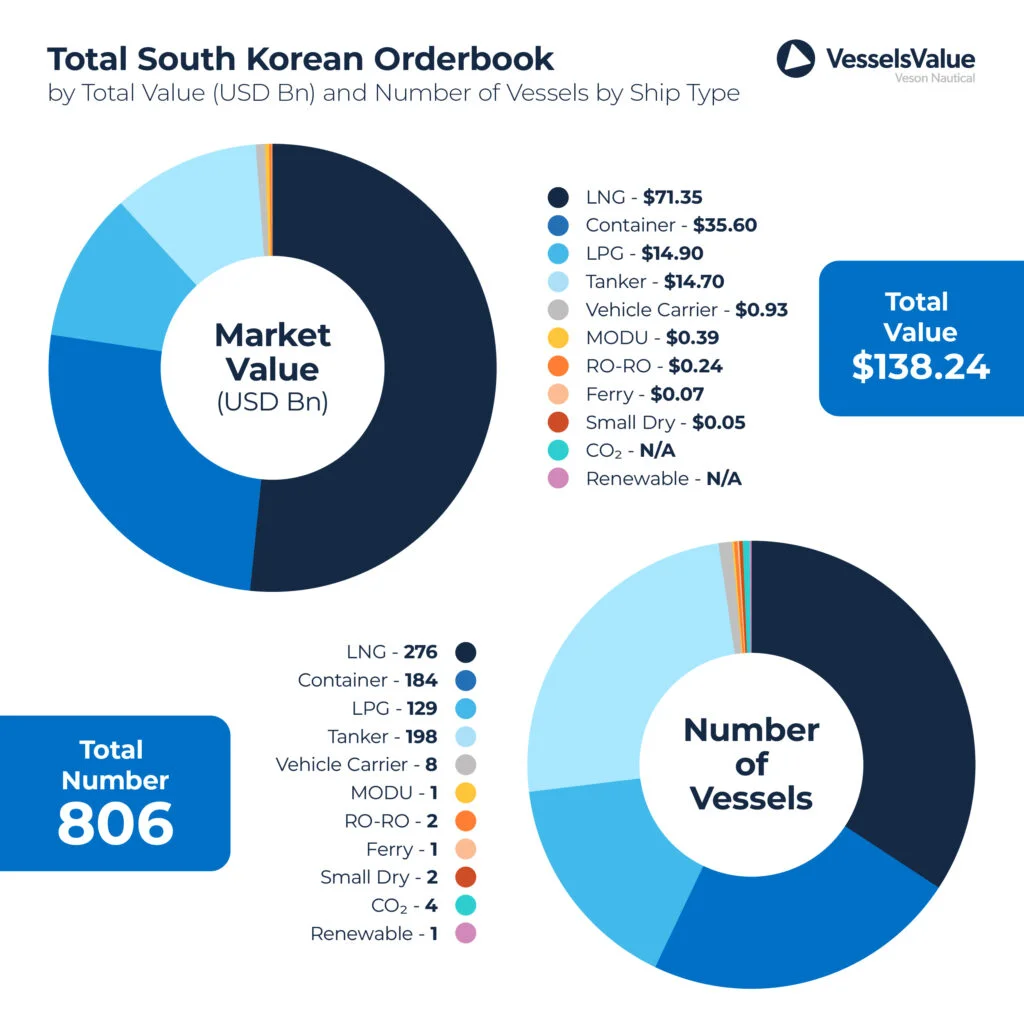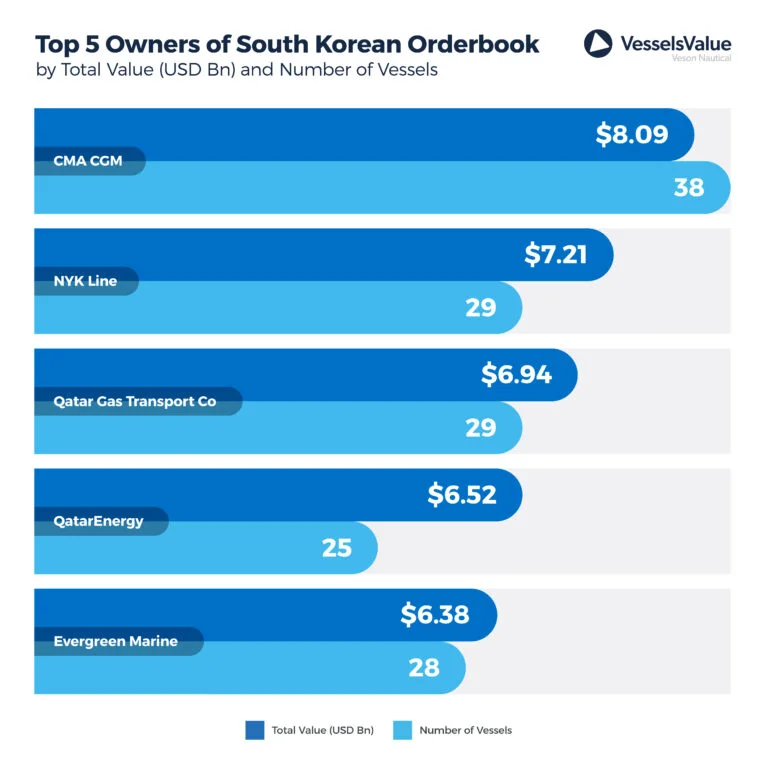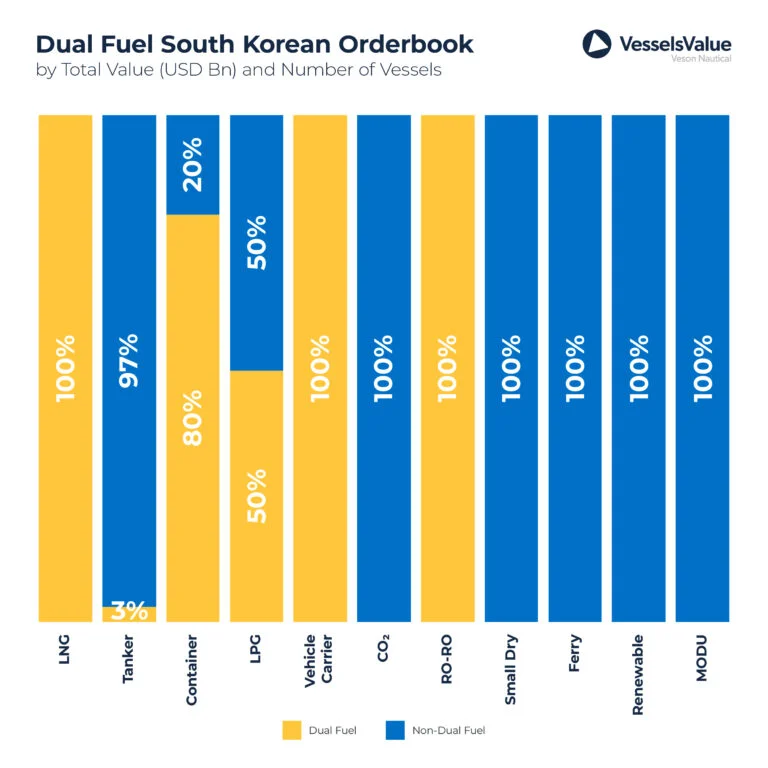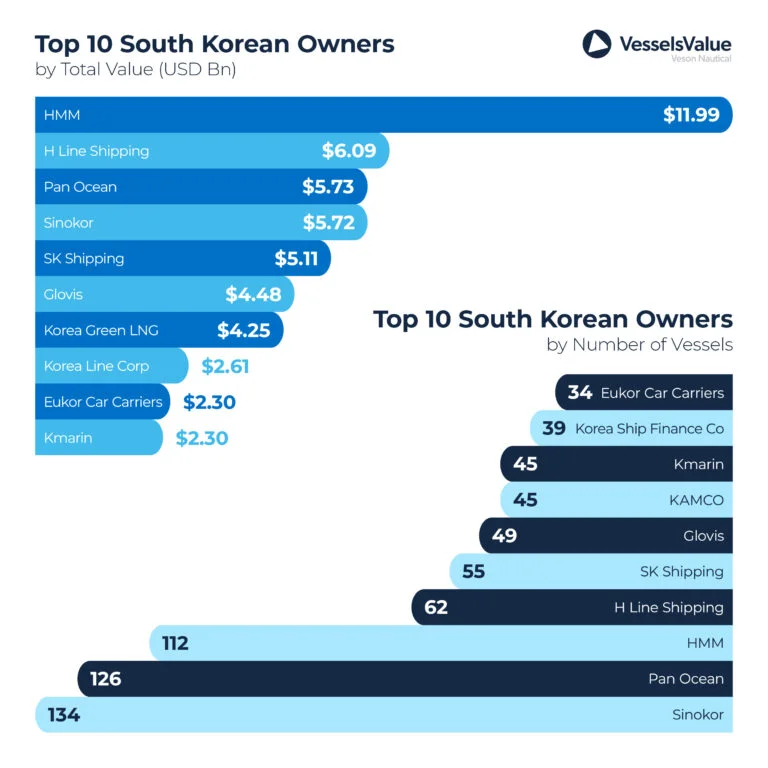VesselsValue data shows that South Korea’s orderbook has now topped $138 billion.

The LNG sector is the most valuable, worth $71.3 billion and accounting for around 52% of the total South Korean orderbook value. This sector also has the highest volume of orders with 276 vessels on order.
Container ships rank second with a market value of $35.6 billion, equating to a share of about 26% and 184 vessels on order. The LPG ranks third with a value of $14.9 billion and 129 vessels on order, closely followed by the tanker orderbook which is valued at $14.7 billion. Tankers surpass both LPG and container ships in volume with 185 vessels scheduled to be built. Vehicle carriers rank fifth with a value of $929 mil and a total of eight vessels on order.

CMA CGM is in first place with a total of $8.09 billion on order, and they have the highest volume of orders consisting exclusively of 38 container vessels within the ULCV, New Panamax, and Post Panamax sectors.
In second place, NYK has a total of $7.21 billion on order which includes 26 large LNG vessels of 174,000 CBM and three VLACs of 88,000 CBM.
In addition to these vessels on order in South Korea, NYK has a further 56 vessels on order in Chinese, Japanese and German yards, including additional orders for LNG, LPG orders, bulkers and tankers.
Qatar Gas Transport ranks third in value with an orderbook worth $6.9 billion, consisting of 29 vessels primarily of the large and Qmax LNG sectors.
Qatar Energy is ranked fourth with an orderbook value of $6.52 billion, consisting of 25 large LNG vessels of 174-175,000 CBM.
With a total orderbook value of $6.38 billion, Evergreen Marine Corporation ranks fifth. The 28 vessels on order are all New Panamax container ships of 15,372 – 15,500 TEU or ULCVs of 24,000 TEU.
Evergreen is followed by MOL with an orderbook value of $5.62 billion and a total of 26 vessels on order.

Of the vessels on order in South Korea, approximately 37% are being fitted with dual-fuel capabilities, with a market value of $71.4 billion. With the exception of LNG carriers which will always be dual fuel, this includes all vehicle carriers and ro-ro’s.
The second highest percentage is the container sector where 148 dual-fuel vessels have been contracted, equating to about 80% of the orderbook. Approximately 50% of the LPG orderbook, or 64 vessels, will be built as dual fuel, with a market value of $7.5 billion.

Of the top owners in South Korea, taking into account both the live fleet and on order, HMM has the most valuable fleet worth $11.9 billion and a total of 112 vessels spanning across the bulker, tanker, container, LNG and vehicle carrier sectors. This is a relatively modern fleet with an average age of eight years.
H Line Shipping are in second place with a fleet value of $6.09 billion and 62 vessels. Pan Ocean ranks third with a fleet value of $5.73 billion, coming in second for the largest fleet, with 126 vessels. However, Sinokor, which rank fourth in terms of value with $5.73 billion, have the largest fleet in terms of volume with 134 vessels. The average age of this fleet is slightly older, with an average age of 11 years, compared to HMM who top the board with a fleet value double that of Sinokor. More than half of this fleet in the container sector but also includes tankers, bulkers and LNG.
South Korea’s shipbuilding industry remains a global leader, with a diverse orderbook dominated by LNG carriers, tankers and container ships.
Source:VesselsValue


